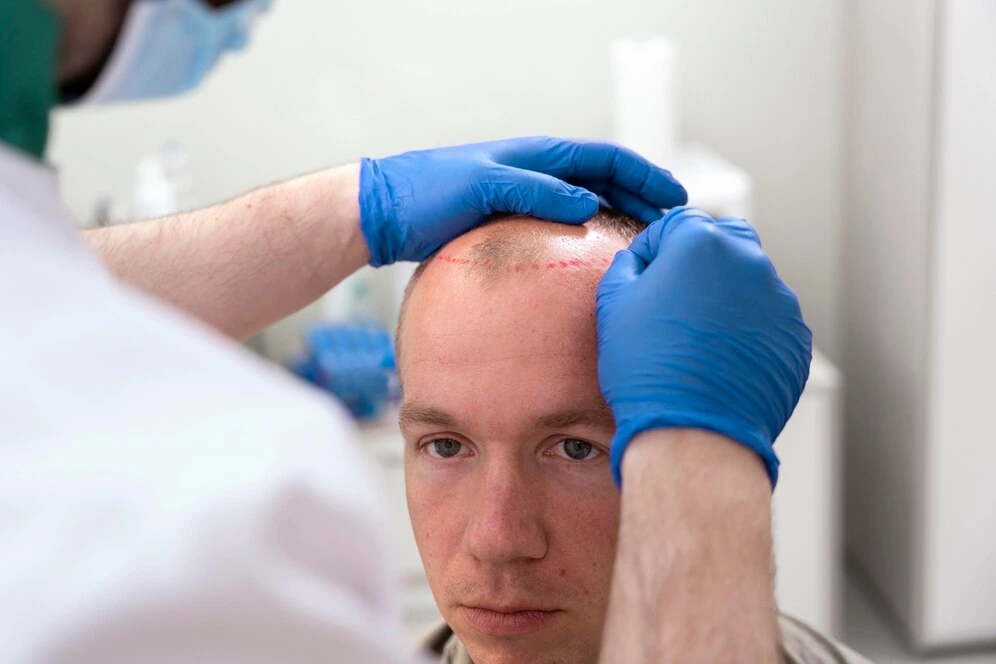
Hair transplantation is one well-established, highly effective hair restoration treatment for baldness or significant hair loss, usually of medical or genetic origin. Medical aesthetics has greatly enhanced hairstyling techniques. Among these existing techniques, DHI (Direct Hair Implantation) stands out as one of the most preferred, cutting-edge, non-surgical hair transplant techniques that can result in excellent outcomes with minimum recovery time. In this article, we’ll discuss the basics of hair transplants and provide an up-close look at the DHI method, comparing it with other hair transplant techniques like Follicular Unit Extraction (FUE).
The process of transplanting hair follicles from areas with abundant and healthy hair growth—most commonly the sides and back of the scalp—into areas with uneven or thinning hair is known as hair transplantation. This method offers a permanent form of hair restoration when other medicinal treatments are insufficient. Various methods exist for performing hair transplants, and among the most advanced is the DHI method, which demonstrates extreme precision compared to other methods and shortens recovery time.
DHI hair transplantation is also known as a more advanced variant of FUE (Follicular Unit Extraction). While FUE hair transplants require preparing channels or incisions on the scalp for hair follicle implantation, DHI eliminates this step and speeds up the procedure using a special device called the Choi pen. This device can extract hair follicles and implant them simultaneously, making the process faster and more efficient without being overly invasive.
In the DHI hair transplant procedure, the surgeon uses the Choi pen—a tool with a hollow needle tip. The surgeon takes hair follicles from the donor area, often located at the back of the head, and implants them directly into the balding or thinning area without cutting. This approach minimizes scalp trauma, resulting in faster recovery and precise placement of hair follicles. As a non-surgical hair transplant procedure, DHI leaves minimal scarring and is highly regarded for addressing natural hair loss efficiently, researchers declare.
DHI hair transplantation offers several advantages that distinguish it from other techniques:
Despite its many benefits, DHI hair transplantation has a few limitations:
DHI hair transplantation is suitable for individuals with baldness, alopecia, or generalized hair loss. The shorter recovery period makes DHI ideal for patients who cannot undergo surgery. This method is also appropriate for individuals on blood thinners and those with various medical conditions, including diabetes.
When considering FUE or DHI hair transplants, understanding the implanter pen is crucial. This device enables implanting surgeons to have better control over the placement, density, and angles of hair grafts.
An implanter pen is a specialized device that allows for precise and accurate insertion of hair grafts into the scalp. This tool helps establish a natural result by controlling the depth, angle, and density of each hair follicle.
During the procedure, the surgeon selects the implant pen size based on the patient’s hair characteristics. The hollow-tipped implanter pen directly implants hair grafts into the scalp, providing better and more precise control than traditional methods.
An implanter pen hair transplant is particularly suitable for patients seeking precision and natural results. The surgeon maintains excellent control during the transplantation process, allowing the transplanted hair to blend seamlessly with existing hair.
DHI hair transplants represent the most modern method of treating hair loss without invasive surgery. They offer quicker recovery, a more natural appearance, and fewer complications. If you are considering a hair transplant in London or elsewhere, consult an experienced surgeon to determine if this method suits you. Whether opting for DHI or FUE, thoroughly understanding the processes and tools involved is essential for making an informed choice.